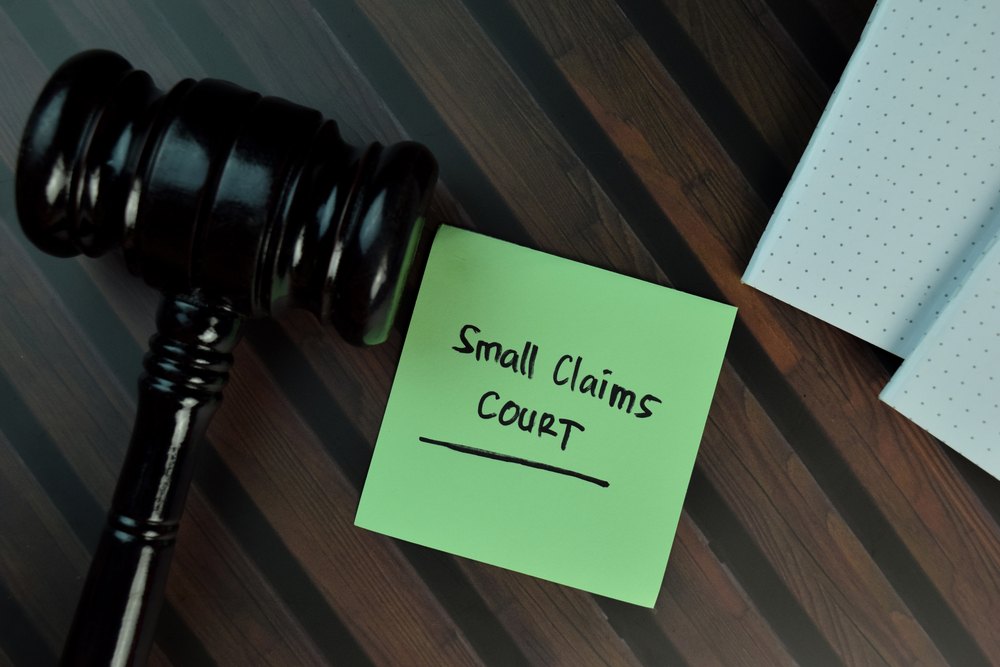Filing a small claims lawsuit can be a practical way to resolve disputes without the need for expensive legal representation. Small claims courts are designed to handle cases involving relatively small amounts of money, typically ranging from a few hundred to a few thousand dollars, depending on the jurisdiction. In this guide, we will walk you through the process of filing a small claims lawsuit, from assessing your case to navigating the court system.
Understanding Small Claims Court
Before filing a lawsuit, it’s essential to understand how small claims court operates. Small claims courts have simplified procedures compared to regular civil courts, making them accessible to individuals without legal representation. These courts typically handle cases involving disputes such as unpaid debts, property damage, landlord-tenant issues, and breach of contract.
Assessing Your Case
The first step in filing a small claims lawsuit is to assess the merits of your case. Consider the following questions:
How do I know if my case is suitable for small claims court? Answer: Small claims court is appropriate for cases involving relatively small monetary damages, typically ranging from a few hundred to a few thousand dollars. If your dispute falls within this range and involves issues such as unpaid debts, property damage, or breach of contract, it may be suitable for small claims court.
What evidence do I need to support my case? Answer: To support your case, gather any relevant documents, such as contracts, receipts, invoices, emails, or photographs. Witness statements or other forms of evidence may also be helpful in presenting your case to the court.
Initiating the Lawsuit
Once you’ve assessed your case and gathered the necessary evidence, you can proceed with filing a small claims lawsuit.
Step-by-Step Guide to Filing a Small Claims Lawsuit
- Research the Requirements: Start by researching the specific requirements for filing a small claims lawsuit in your jurisdiction. Each state or country may have its own rules and procedures for initiating a small claims case.
- Complete the Necessary Forms: Most small claims courts require you to fill out a complaint form, also known as a statement of claim or a petition. Provide detailed information about the parties involved, the nature of the dispute, and the amount of money you are seeking.
- File the Complaint: Once you’ve completed the necessary forms, file them with the small claims court. Depending on the jurisdiction, you may need to pay a filing fee at this stage.
- Serve the Defendant: After filing the complaint, you must officially notify the defendant of the lawsuit. This is known as “serving” the defendant and ensures that they have the opportunity to respond to the allegations against them.
- Prepare for Court: As the plaintiff, you’ll need to prepare your case for presentation in court. Organize your evidence, gather any witnesses you plan to call, and familiarize yourself with the relevant laws and procedures.
How much does it cost to file a small claims lawsuit? Answer: The cost of filing a small claims lawsuit varies depending on the jurisdiction. In some cases, there may be filing fees ranging from a few dollars to a few hundred dollars. However, some courts offer fee waivers for individuals who cannot afford to pay.
Do I need a lawyer to file a small claims lawsuit? Answer: In most cases, you do not need a lawyer to file a small claims lawsuit. Small claims court procedures are designed to be accessible to individuals without legal representation. However, you have the option to hire a lawyer if you choose to do so.
Attending the Hearing
Once the defendant has been served, the court will schedule a hearing where both parties will have the opportunity to present their case.
What to Expect at the Hearing
- Presenting Your Case: As the plaintiff, you will have the opportunity to present your evidence and arguments to the judge. Be concise and organized in your presentation, focusing on the key points of your case.
- Cross-Examination: After you’ve presented your case, the defendant will have the opportunity to cross-examine you and any witnesses you’ve called. Be prepared to answer questions and address any challenges to your case.
- Judgment: After hearing from both parties, the judge will render a judgment based on the evidence and testimony presented. The judgment may include an award of monetary damages, an order for the defendant to take specific actions, or a dismissal of the case.
What happens if the defendant doesn’t show up to court? Answer: If the defendant fails to appear at the hearing, the court may enter a default judgment in favor of the plaintiff. This means that the plaintiff will likely be awarded the relief sought in the complaint.
Can I appeal the judgment? Answer: In some jurisdictions, parties have the right to appeal a judgment rendered in small claims court. However, the grounds for appeal are usually limited, and the process can be more complex than the initial lawsuit.
Collecting Your Judgment
If the court rules in your favor and awards you damages, you may still need to take steps to collect the judgment.
Collecting Your Judgment
- Payment Plan: If the defendant is willing to pay but unable to do so in a lump sum, you may agree to a payment plan that allows them to make regular payments until the debt is satisfied.
- Wage Garnishment: In some cases, you may be able to garnish the defendant’s wages to collect the judgment. This involves obtaining a court order directing the defendant’s employer to withhold a portion of their wages and remit it to you.
- Bank Levy: Another option for collecting a judgment is to levy the defendant’s bank account. This involves obtaining a court order directing the bank to freeze the defendant’s account and transfer funds to satisfy the judgment.
What if the defendant refuses to pay the judgment? Answer: If the defendant refuses to pay the judgment voluntarily, you may need to take additional legal steps to enforce the judgment, such as wage garnishment or bank levy.
Is there a time limit for collecting a judgment? Answer: The time limit for collecting a judgment varies depending on the jurisdiction. In some cases, judgments may expire after a certain number of years if they are not enforced within that time frame.
Conclusion
Filing a small claims lawsuit can be a straightforward process for resolving disputes involving relatively small amounts of money. By understanding the procedures and requirements involved, you can navigate the small claims court system with confidence and seek a fair resolution to your dispute. If you have any further questions or need assistance, consult with a legal professional or contact your local small claims court for guidance.


